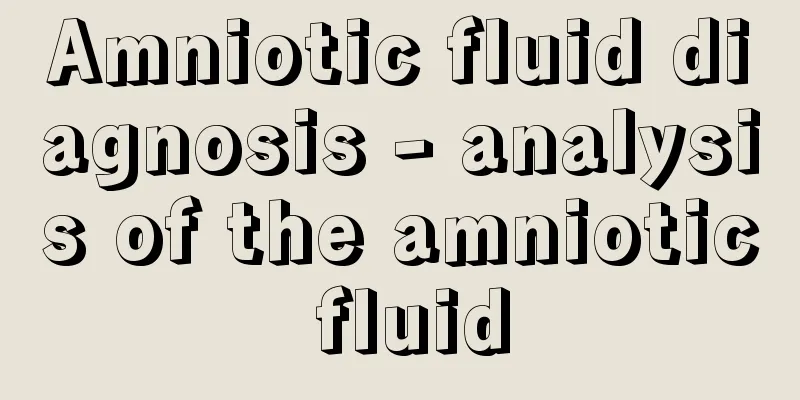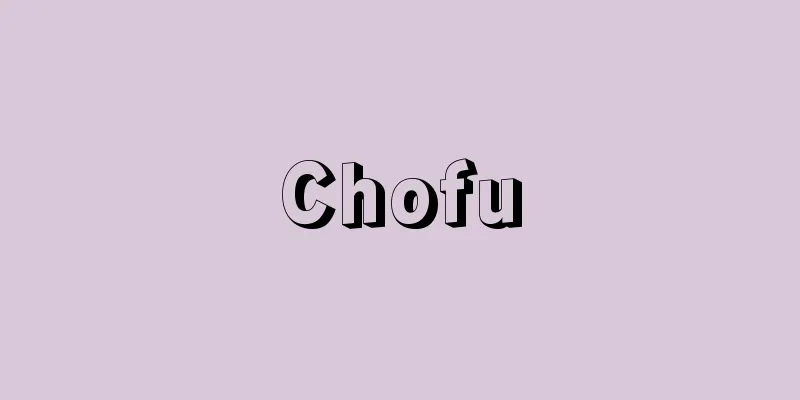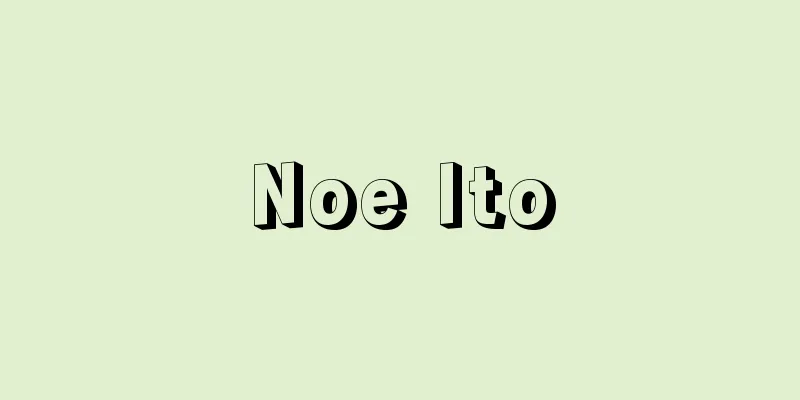Physiognomy - Physiognomy

|
A general term including bone reading, facial reading, palm reading, etc. Physiognomy, also known as physiognomy, is the prediction of a person's character, destiny, and future from the external appearance, shape, movements, and characteristics of the body. The word "physiognomy" means "appearance," and refers not only to the external appearance but also to the internal appearance. Therefore, physiognomy or physiognomy targets the entire human body, but generally it is often used to refer to the appraisal of the face. When it comes to the hand, it becomes palmistry, and has developed into an independent study. Physiognomy has a long history and can be found in the Aryan culture of India. It was also studied in Greece by Pythagoras and Plato, among others. Aristotle is said to have laid the foundations of ancient Western physiognomy, and in his writings he discussed personality from the relationship between face and character, that is, similarities between the appearance of various animals and peoples, and facial expressions as a reflection of the mind. In the 18th century, Swiss physiognomist Lavator published "Fragments of Physiognomy," a collection of his predecessors' observations and his own research results, laying the foundations of modern physiognomy. In the mid-18th century, Austrian physiologist Garga appeared, and in the mid-19th century, scholars such as Walker in England and Redfield in America appeared, and in the 20th century, Kretschmer appeared in Germany, and his book "Physique and Character" (1921) marked the establishment of physiognomy as a modern science. In China, its origin can be found in the ancient medical text Lingshu Jing. At the time, physical observation was used to diagnose illness, but it later came to be used to judge one's destiny. The complete Shenxiang work, said to have been written by Chen Zhongtan of the Song dynasty and later revised by Yuan Zhongche of the Ming dynasty, is famous as a classic of oriental physiognomy. Japanese physiognomy was also influenced by this book in the early Edo period and underwent a complete makeover. Together with Nanboku Soho, written by Mizuno Nanboku in the mid-18th century, it has become the basis of modern physiognomy research in Japan. After Mizuno Nanboku, physiognomists include Yamaguchi Chieda, Hayashi Bunrei, the founder of gasoho, followed by Meguro Genryushi and Nakamura Bunso. Eastern and Western physiognomy both began with the question of type and were similar in their starting points, but as time passed they diverged in direction; the former was focused primarily on good and bad fortune, the rise and fall of one's fortune, the rise and fall of one's descendants, etc., and was more fated, while the latter was directed at a person's character, temperament, and talents. In the practice of physiognomy, the first problem is "classification by characteristics." There are various theories on this, such as the cross-face method, the twenty-face method, and the five elements method, but currently, it is common to classify people's faces into three basic types: (1) nutritional quality (round type), (2) muscular quality (square type), and (3) mental quality (inverted triangle type). (1) is fleshy and gentle. The personality is harmonious and cheerful, not picky about details, and friendly. The weaknesses are a lack of decisiveness and getting bored easily. (2) has firm muscles in both the face and body, and is a fighter type. They are proactive, have excellent energy, are honest, and are persistent. They hate to lose, and are stubborn, which makes it difficult for them to get along with others. (3) has a developed head, sunken cheeks, and a pointed chin. They have a slender body with thin bones, are intelligent and have excellent thinking skills, are sensitive, and have a developed aesthetic sense. They are scholars, thinkers, and artists, but their weakness is that they lack sociability. Next is the "Facial division." (1) From the top of the forehead to the eyebrows is the upper stop, (2) from the bottom of the eyebrows to the nose is the middle stop, and (3) from the bottom of the nose to the chin is the lower stop. These are called the three stops, and they are sometimes assigned to the three elements of heaven, earth, and man. (1) represents the luck of the early years, as well as ancestors, parents, intelligence, and official status. If the upper stop is good, the luck of the early years is good and the intelligence is excellent. If there is a defect, the relationship with the parents is weak and there is little support from superiors. (2) represents the luck of middle age, as well as one's own ability, will, and financial luck. If this aspect is good, it indicates that the person is proactive and full of energy, and that the luck of middle age is solid. If there is a defect, the person is passive and weak-willed, and cannot achieve their goals. (3) represents the luck of later years, as well as descendants, subordinates, address, and affection. If this is good, you will have no problems with food, clothing, or shelter from middle age onwards, and you will enjoy a prosperous family life. If it is poor, your later years will be lonely. Next is the "Five Senses." In physiognomy, the five senses are the eyebrows, eyes, nose, mouth, and ears. Eyebrows indicate relationships with parents, siblings, and friends, lifespan, health, and talent in writing, art, and the arts. A narrow space between the eyebrows indicates nervousness, while a space that is too wide indicates a relaxed and rough tendency. The eyes are considered the most important part of physiognomy, and they show all kinds of mental states, such as mental strength and emotions. Particularly important is the gaze, and if the eyes are vibrant, the person is considered healthy, strong-willed, and full of energy. The Nanboku Soho also teaches that "Sharp eyes mean a sharp mind. Gentle eyes mean a gentle heart." The nose indicates luck in middle age, personality, self-esteem, financial problems, and the strength and weakness of the lungs. A high nose indicates strong self-esteem, a low nose a negative personality, a round nose a kind person with material wealth, and a red nose a sign of squandering money. The mouth is the most important of the lower signs, and indicates health, motivation for life, luck in marriage, financial problems, and the strength of love. The mouth is said to be the vessel of thought, and a large mouth indicates a proactive, strong-willed, big-minded person, while a small mouth, on the other hand, indicates a weak will and a negative personality. Ears indicate heredity, destiny, ancestors, parents, and financial luck, but in particular, the ears are said to be the seedlings of the kidneys, and are closely related to the kidneys, and the strength of the kidneys and vitality are expressed in the ears. For example, people with dark ears are judged to have bad kidneys, and it is said that women with small and weak ears will not have children. Next is "Diagnosing illness through color." Physiognomy and diagnosing illness are deeply intertwined, and as mentioned above, darkening of the ears is said to be a sign of kidney disease, and as the disease progresses, the entire face will take on a dark color. A yellow tinge under the eyes indicates liver disease, redness around the eyebrows indicates heart disease, and as the disease progresses, the entire face will turn red and the person will become easily angered. A pale face and pink cheeks indicate lung disease, and a yellow forehead and entire face indicates a digestive system disease and slow movements. According to physiognomy, the conditions for a person to be blessed with good health and fortune are as follows: a broad forehead, high hairline, prominent eyebrows, ears that are set close to the head and have a good, thick colour, a full and abundant nose, bright eyes with clear pupils and whites, and a full, moist chin with a good, thick colour. Nowadays, efforts are being made to digitize and symbolize the human face, which has resulted in the development of modern computer-based physiognomy. [Yuko Yoshino] ©Shogakukan "> Physiognomy (Santen and Gokan) Source: Shogakukan Encyclopedia Nipponica About Encyclopedia Nipponica Information | Legend |
|
骨相、面相、手相などを含む総称。身体の外見、形、動作および特徴から人間の性格、運命、未来の予見を行うのが人相学で、観相学ともいう。相とは「すがた」で、外面のみでなく内面的のものもさす。したがって人相学あるいは観相学は、人体の全体を対象とするが、一般には顔面の鑑定をいう場合が多い。手の場合は手相学となり、独立の研究として発展した。 人相学の発生は古く、すでにインドのアーリア文化のなかにみいだされる。ギリシアにおいてもピタゴラスやプラトンらによって研究され、なかでもアリストテレスは古代西洋人相学の基礎を築いたとされ、その著述のなかで、顔面と性格の関係、つまり各種動物の外見と各民族の外見などの類似、精神の反映としての表情などから性格を論じている。18世紀スイスのラベーターは、先人の観察記録と、自身の研究成果を集録した『人相学断章』を刊行して現代人相学の基礎をつくった。18世紀中葉にはオーストリアの生理学者ガルガ、19世紀なかば、イギリスにウォルカー、アメリカにレッドフィールなどの学者が出て、20世紀に入るとドイツにクレッチマーが現れ、その著『体格と性格』(1921)は現代科学としての人相学の確立を示すものである。 中国では上古の医書『霊枢経(れいすうけい)』にその起源が求められる。当時は病気診断の方法として身体の観察が行われたが、それから進んで、やがてそれは運命の判断にも応用されるようになったのである。宋(そう)の陳摶(ちんたん)の著作といわれ、のちに明(みん)の袁忠徹(えんちゅうてつ)増訂の『神相全編』は東洋観相学の古典として名高い。日本の観相学も、江戸時代初期にこの書の影響を受けて面目を一新し、18世紀中葉、水野南北が著した『南北相法』とともに日本における近代観相学研究の基本となっている。水野南北以後の観相家としては、山口千枝(ちえだ)、画相法(がそうほう)の創始者、林文嶺(ぶんれい)、それに続く目黒玄龍子(げんりゅうし)、中村文聰(ぶんそう)らがあげられる。 東洋と西洋の人相学はともに類型の問題に始まり、出発点においては相似であるが、時の推移につれて両者は方向を異にし、前者の的(まと)は主として吉凶禍福、運命の消長、子孫の栄枯などに向かって絞られ、より運命的であるのに対し、後者のそれは人の性格、気質、才能に向けられている。 観相の実際において、まず問題は「形質による分類」ということである。これには諸説があり、十字面法、二十面法、五行相法などが伝えられているが、現在は、(1)栄養質(丸型)、(2)筋骨質(四角型)、(3)心性質(逆三角型)の3種基本型に人の顔を分類するのが一般的である。(1)は肉づきがよく柔和な感じ。性格は円満快活、細かいことにこだわらず人当たりもよい。欠点は決断力に欠け、飽きやすい。(2)は顔、体つきともに筋肉がしまり、闘士型。積極的で行動力に優れ、実直で粘り強い。負けず嫌いで、頑固なところから対人関係に難がある。(3)は頭部が発達し、頬(ほお)がこけ頤(あご)がとがっている。体も骨細で華奢(きゃしゃ)、知的で思考力に優れ、神経もデリケートで美的感覚が発達している。学者、思想家、芸術家タイプで、社交性に欠けるのが欠点である。 次は「顔面の区分」である。(1)額の頂点から眉(まゆ)までが上停(じょうてい)、(2)眉の下から鼻までが中停、(3)鼻底から頤までが下停で、三停といい、これを天・地・人の三才に配することもある。(1)が表すものは初年の運、および祖先、父母、知力、官禄(かんろく)などで、上停が良好であれば初年運がよく、知能も優秀。欠陥があれば父母の縁が薄く、目上の引き立ても少、とする。(2)の表すものは中年の運勢、および自己の力量、意志、財運など。この相が良好であれば積極的で気力充実し、中年期の運勢の堅実さを示す。欠陥があれば消極的で意志薄弱、目的達成ができない。(3)は晩年の運勢、および子孫、部下、住所、愛情面などを表す。ここが良好であれば中年以降の衣食住に不自由なく、家庭的に恵まれる。貧弱であると寂しい晩年になる。 次は「五官」。人相学上の五官とは、眉(まゆ)、目、鼻、口、耳をいう。眉は親・兄弟・朋友(ほうゆう)などの関係、寿命、健康、および文章・美術・芸能などの才能を示す。狭い眉間(みけん)は神経質、開きすぎは解放的で大まかな傾向を示すとみる。目は人相のなかでもっとも重要な部位とされ、精神力の強弱、喜怒哀楽など、あらゆる人間の心の状態を表す。とりわけ重視されるのは眼光で、目に活力があれば健康体で信念強く気力旺盛(おうせい)な人とされる。『南北相法』にも「目鋭ければ心鋭し。目柔和なれば心柔和なり」と説かれている。鼻は中年の運気、人格、自尊心、金銭の問題、肺臓の強弱などを示す。高い鼻は自尊心の強さを、低い鼻は消極的性格を表し、丸い鼻は人がよく、物質的に恵まれる相で、鼻が赤いのは散財の相という。口は下停のなかでもっとも重要視され、健康状態、生活意欲、結婚運の良否、金銭の問題、愛情の厚薄などを表す。「口は思想の器(うつわ)」といい、大きな口は積極的で意志が強く、考え方も大きいことを示し、小さな口は反対に意志薄弱、消極的性格を表すという。耳は遺伝と運命、祖先、父母、金運などを示すが、とりわけ「耳は腎(じん)の苗(なえ)」といって腎臓と密接な関係があり、腎臓、精力の強弱は耳に表れる。たとえば、耳の色の黒ずんでいる人は腎臓が悪いと判断され、また、耳が小さく貧弱な女性は子供に縁がないともいわれる。 次は「色による病気の判断」。人相学と病気の判断は深くかかわりあい、前述のように耳が黒ずんでくるのは腎臓疾患の象とみ、さらに病気が進むと顔全体が暗色を帯びる、とする。目の下が黄色を帯びるのは肝臓の病、眉間のあたりが赤くなるのは心臓の病気、進行すると顔全体が赤らみ、怒りやすくなる。顔色が白く、頬が桃色になるのは肺の病い、額・顔全体が黄色を呈するのは消化器系の病気で動作も緩慢になる、とする。 以上この人相学に照らして健康福徳に恵まれる人相の条件をあげれば、まず額は広く、髪際は高く、眉が秀で、耳は頭について肉が厚くよい色を呈し、鼻の先は豊大で、目には光があって黒目白目がはっきりしており、頤は肉が豊厚で潤いのあるよい色を呈している、ということなどである。 今日では、人間の顔の数字化、記号化が図られ、その結果、コンピュータによる現代人相学も新しく開発されることになった。 [吉野裕子] ©Shogakukan"> 人相(三停と五官) 出典 小学館 日本大百科全書(ニッポニカ)日本大百科全書(ニッポニカ)について 情報 | 凡例 |
<<: Featured image - Ninsogaki
Recommend
Pharmaceutical industry - yakuhin kougyou
A general term for the manufacturing industry tha...
Oita Prefecture - Oita
A prefecture in the northeastern part of Kyushu. T...
Large-scale project - Ogata Project
...Universities play a leading role in basic rese...
Injunction - Injunction (English spelling)
A court order aimed at eliminating an illegal situ...
Thrombosis
…Under normal conditions, blood does not clot in ...
Kokugaho - Kokugaho
From the mid-Heian period onwards, laws were enact...
Uzun Hawa - Uzun Hawa
A rhythmic style of Turkish folk songs. It is sung...
Telome theory
…The leaves of most vascular plants, on the other...
Palladino, E. (English spelling) PalladinoE
...As a result, they are not often the subject of...
Cointreau
...Orange Curacao and colorless White Curacao are...
promethium
Pm. Atomic number 61. Electron configuration [Xe]...
Choreography - Choreography
A dance term. The act of creating or arranging dan...
Gazetta - Gazetta
…A continuous, irregular news publication started...
Noriko - Kikō
〘Noun〙① ('Ki' means small guidelines and &...
McKerrow, R.
...When Robert Proctor (1868-1903), librarian at ...









